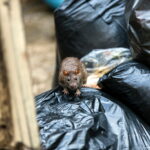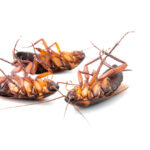The Importance of Pest Prevention in Schools
- The Importance of Pest Prevention in Schools
The Importance of Pest Prevention in Schools
Maintaining a pest-free environment within educational institutions is vital for the well-being of students and staff. Pest infestations threaten the infrastructure and pose health risks, potentially disrupting the learning environment. Schools must adopt proactive strategies to mitigate pest-related challenges effectively.
disrupting the learning environment. Schools must adopt proactive strategies to mitigate pest-related challenges effectively.
Understanding the Importance of Pest Prevention
Ensuring that educational institutions remain pest-free is essential for providing a safe learning space. Unaddressed pest issues pose significant health risks, leading to structural damage and potential hazards for students and staff. Pests can contaminate food, transmit diseases, and even create psychological stress.
Pests can contaminate food supplies in areas like school kitchens, endangering the health of individuals who consume them. Furthermore, the presence of pests can disrupt daily school operations, causing distractions and safety concerns. For these reasons, schools need to establish and maintain effective pest prevention protocols to protect their premises from such risks.
Common Types of Pests Found in Schools
Educational institutions must remain vigilant against various pests, as infestations can significantly disrupt the learning environment. Some common pests include:
- Rodents: Mice and rats are often attracted to school cafeterias, classrooms, and food storage areas.
- Insects: Cockroaches, ants, and flies thrive in damp spaces such as school kitchens, bathrooms, and classrooms.
- Birds: Pigeons and sparrows may nest in building structures, causing damage and spreading droppings.
- Bedbugs: These pests can be introduced through infested furniture or clothing, resulting in widespread problems.
Each of these pests poses unique challenges. Rodents and cockroaches, for instance, can carry diseases, while bedbugs can lead to discomfort and anxiety. Schools should consider integrated pest management (IPM) practices to manage these pests.
The Role of Integrated Pest Management (IPM)

IPM incorporates several strategies, including regular monitoring, sanitation practices, and exclusion techniques. In the event pesticides are required, IPM advocates for the use of least-toxic options. Through IPM, schools can maintain a hostile environment for pests, reducing the need for more aggressive or harmful interventions.
For example, regular site inspections help identify early pest problems, allowing for prompt action. As part of the school’s routine maintenance, establishing pest prevention services ensures early detection and swift response to any emerging issues. This preventive approach protects both the learning environment and the health of students and staff.
Implementing Preventive Measures
Institutions should implement several key strategies to successfully prevent pests from infiltrating schools. Regular site evaluations, proper hygiene practices, and waste disposal routines are foundational to maintaining a pest-free environment.
Regular Site Evaluations and Inspections
Routine inspections are essential in identifying potential risks and pest entry points. These evaluations help schools stay ahead of pest infestations by addressing vulnerabilities before they become major problems. Some steps include:
- Hiring Professional Pest Control Services: Pest control professionals can conduct thorough inspections and provide treatments to prevent infestations.
- Checking for Wasp Nests: Regular outdoor inspections, particularly in dining or recreational areas, are important for identifying and removing wasp nests.
- Monitoring Dining Halls: Cleanliness in cafeterias is critical to avoid attracting pests like rodents and insects.
- Educating Staff and Students: Awareness among students and staff about cleanliness, hygiene, and reporting pest sightings is crucial for maintaining a safe environment.
Maintaining Cleanliness and Hygiene
Cleanliness is the cornerstone of any pest prevention program. Schools must regularly implement strict cleaning routines, including sweeping, mopping, and disinfecting surfaces. Ensuring that food debris is promptly removed and areas remain clutter-free will minimize the risk of pest infestations.
Cafeterias and storage areas must be kept clean, as these are prime locations for pests. Additionally, enforcing good hygiene practices among students, such as proper handwashing and food storage, will further reduce the chances of an infestation.
Proper Waste Disposal Practices
Effective waste disposal is a critical element of pest prevention. Schools should adopt strict waste management protocols, ensuring that garbage is collected regularly and bins are sealed tightly to
Educational institutions should foster a culture of cleanliness by educating students and staff about the importance of proper waste disposal. When everyone contributes to maintaining a clean environment, the likelihood of a pest problem diminishes.
Health Risks Associated with Pest Infestations
Pests in schools pose significant health risks to everyone on campus. Rodents, insects, and birds can spread diseases, contaminate surfaces, and damage indoor air quality. For example, cockroaches are known to trigger asthma and allergic reactions, particularly in children. Rodents can spread diseases like Salmonella and Hantavirus.
Beyond physical health, the presence of pests can have a negative impact on mental well-being. Anxiety, stress, and discomfort can result from seeing pests in the classroom or school buildings. This unease can hinder academic performance and the general well-being of students and staff.
Furthermore, pest infestations often lead to the use of pesticides, which can introduce harmful chemicals into the environment. Schools must prioritize pest prevention to avoid these risks and protect physical and mental health.
Compliance with Legal Requirements for Pest Control
Schools must adhere to strict legal regulations regarding pest control. Non-compliance with these requirements can result in fines, legal action, and damage to the institution’s reputation. Therefore, it is essential that schools:
- Conduct regular inspections: Monitor for signs of pest activity throughout the premises.
- Implement IPM strategies: Use prevention-focused, environmentally friendly pest control methods.
- Keep records: Document all pest control measures, including treatments and products used.
- Train staff: Ensure staff members understand sanitation and can detect early pest signs.
Compliance with legal requirements not only ensures the safety of students and staff but also helps avoid costly penalties.
Conclusion

Secure a Safe and Pest-Free Learning Environment with Youngs Pest Control
Don’t let pests disrupt your educational environment. Youngs Pest Control offers expert pest prevention solutions tailored for schools and educational institutions. Our proactive approach, including regular inspections and integrated pest management, ensures a clean and healthy space for students and staff. Contact us today at 0161 776 9832 or email [email protected] to schedule a consultation and enhance your pest control strategy.
